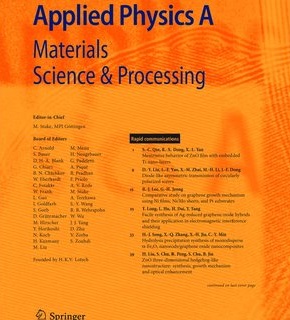Experimental investigations into the effect of low temperature empowerment on the grooves quality of ITO conductive glass using by micro grinding
Abstract
This paper conducted a single-factor experiments of micro-scale grinding of ITO conductive glass, changing the feed speed, grinding depth and spindle speed. The effects of temperature reduction on the micromorphology, surface roughness and transmittance of the machined surface were analyzed by comparing the experiments at normal temperature. The results show that different areas of the groove present different morphologies, and there are obvious scratch areas on the side walls of the groove. The removal mode of the glass substrate is mainly the evolution and interweaving of the initial micro-damage. The micro-morphology is mainly pits and cracks of different sizes. The indium tin oxide film is mostly flaky and curled. The reduction of processing temperature improves the hardness and strength of the material, inhibits the further evolution of damage when the processing parameters change, and improves the surface quality. Low-temperature grinding produces more powder chips with smaller size. The appropriate amount of chip accumulation can improve the processing quality and tool wear. The transmittance of light of different wavelengths is sensitive to temperature changes to different degrees. The transmittance of ultraviolet and visible light of the workpiece is improved after low-temperature processing. The research reveals the low-temperature grinding characteristics of ITO conductive glass based on experiments, which is helpful to optimize the design and implementation of low-temperature grinding process, and proves that it is a feasible way to improve the processing quality of ITO conductive glass by mainly removing brittleness.

 求助内容:
求助内容: 应助结果提醒方式:
应助结果提醒方式:


